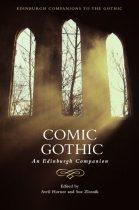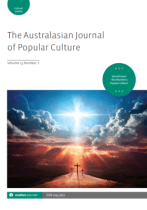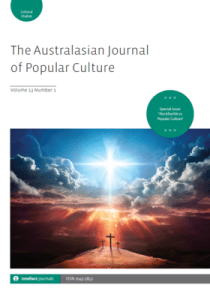2019
 S.P. Somtow’s novel The Other City of Angels (2008) portrays Bangkok as a Gothic metropolis: a city stuck between illusion and reality, where dreams and nightmares come to life, simultaneously backwards and modern, spiritual and material, and full of peculiarities that make one doubt whether such a place exists at all. It is a temple to consumerism filled with fortune tellers and high society serial killers that for Somtow, a composer himself, can best be expressed through the jarringly haunting sounds of Béla Bartók’s music. The Other City of Angels (2008) is a modern retelling of the Gothic tale of Bluebeard’s wife and her fatal discovery of her husband’s dark secret, and – true to its Gothic origins – it is filled with romance, terror, and laughter. This paper focuses on the novel’s comic dimension and discusses Somtow’s use of dark humour and the Gothic grotesque as a strategy to exoticize Bangkok for foreign readers by simultaneously reinforcing and defying Western stereotypes of Bangkok as the Oriental city, once (in)famously described as the city of temples and prostitutes. The paper also explores the way comic elements are used to offset the critical commentary on class division and social inequality that are seen as ingrained in the fabric of Thai culture and further aggravated by the materialism and consumerism characteristic of contemporary Thai society.
S.P. Somtow’s novel The Other City of Angels (2008) portrays Bangkok as a Gothic metropolis: a city stuck between illusion and reality, where dreams and nightmares come to life, simultaneously backwards and modern, spiritual and material, and full of peculiarities that make one doubt whether such a place exists at all. It is a temple to consumerism filled with fortune tellers and high society serial killers that for Somtow, a composer himself, can best be expressed through the jarringly haunting sounds of Béla Bartók’s music. The Other City of Angels (2008) is a modern retelling of the Gothic tale of Bluebeard’s wife and her fatal discovery of her husband’s dark secret, and – true to its Gothic origins – it is filled with romance, terror, and laughter. This paper focuses on the novel’s comic dimension and discusses Somtow’s use of dark humour and the Gothic grotesque as a strategy to exoticize Bangkok for foreign readers by simultaneously reinforcing and defying Western stereotypes of Bangkok as the Oriental city, once (in)famously described as the city of temples and prostitutes. The paper also explores the way comic elements are used to offset the critical commentary on class division and social inequality that are seen as ingrained in the fabric of Thai culture and further aggravated by the materialism and consumerism characteristic of contemporary Thai society.



 This paper offers a reading of Anjaan: SCU as an example of Gothic television placed in the context of Globalgothic. The article situates Anjaan: SCU within a larger body of supernatural detective series, the genre that has contributed significantly to Asian television’s global presence, investigates the gothic themes employed in the creation of the show, both in terms of its narrative strategies and visual aesthetics, and examines the social construction of ghosts in the series. The article argues that the narrative structure of the show operating across legal and mythical dimensions serves a didactic purpose and that these modern reconfigurations of Indian ghost lore aim to dispense social critique and address controversial local issues, such as caste-based inequality, female infanticide, or ‘honour’ killings.
This paper offers a reading of Anjaan: SCU as an example of Gothic television placed in the context of Globalgothic. The article situates Anjaan: SCU within a larger body of supernatural detective series, the genre that has contributed significantly to Asian television’s global presence, investigates the gothic themes employed in the creation of the show, both in terms of its narrative strategies and visual aesthetics, and examines the social construction of ghosts in the series. The article argues that the narrative structure of the show operating across legal and mythical dimensions serves a didactic purpose and that these modern reconfigurations of Indian ghost lore aim to dispense social critique and address controversial local issues, such as caste-based inequality, female infanticide, or ‘honour’ killings.
 While folk horror has never been identified as exclusive to western cinema, most studies of the topic have so far been strongly aligned with western world-views, philosophies and methodologies. This makes it difficult to apply their findings to films made in non-Christian non-western countries, such as Thailand. This article discusses Banjong Pisanthanakun’s film Rang Song (The Medium) (2021) as a case in point to demonstrate how folk horror operates as a mode in Thai cinema. Building on the existing studies and modifying the current definitions of folk horror to apply them to the Thai cultural context, the article argues that Thai folk horror narratives are steeped in representations of the urban–rural divide that pit metropolitan Bangkok against low-income provinces (in particular, the northeastern region of Isan) and reflect on cultural tensions related to ethnicity and class.
While folk horror has never been identified as exclusive to western cinema, most studies of the topic have so far been strongly aligned with western world-views, philosophies and methodologies. This makes it difficult to apply their findings to films made in non-Christian non-western countries, such as Thailand. This article discusses Banjong Pisanthanakun’s film Rang Song (The Medium) (2021) as a case in point to demonstrate how folk horror operates as a mode in Thai cinema. Building on the existing studies and modifying the current definitions of folk horror to apply them to the Thai cultural context, the article argues that Thai folk horror narratives are steeped in representations of the urban–rural divide that pit metropolitan Bangkok against low-income provinces (in particular, the northeastern region of Isan) and reflect on cultural tensions related to ethnicity and class.
 Humour has always been an integral part of Thai horror, a cinematic genre characterized by its internal hybridity and fluidity. Despite some attempts to align local productions with Western or Japanese horror, the majority of Thai horror films continue to mix scares with laughter, frequently featuring the ‘unholy trinity’ of ghosts, slapstick comedy and the kathoey – a Thai third gender category, often depicted in such productions in terms of the Gothic body that is simultaneously the site of ridicule and fear. This article examines the work of two directors who have embraced this approach – Poj Arnon and Yuthlert Sippapak. While Poj Arnon’s films have often been branded as tasteless and nonsensical, each of his 30-something productions has made a healthy profit, attesting to their popularity. In contrast, Yuthlert Sippapak’s works have baffled audiences at several international festivals and the director himself has been promoted as an inscrutable auteur. This article focuses on two major film series by these directors – Hor Taew Tak by Poj Arnon, and Buppah Rahtree by Yuthlert Sippapak. The article uses these films to illustrate a distinction between Thai horror comedies and Thai popular horror films, arguing that the comic elements are an indispensable part of their Gothic framework and a feature characteristic of Thai popular horror film in general.
Humour has always been an integral part of Thai horror, a cinematic genre characterized by its internal hybridity and fluidity. Despite some attempts to align local productions with Western or Japanese horror, the majority of Thai horror films continue to mix scares with laughter, frequently featuring the ‘unholy trinity’ of ghosts, slapstick comedy and the kathoey – a Thai third gender category, often depicted in such productions in terms of the Gothic body that is simultaneously the site of ridicule and fear. This article examines the work of two directors who have embraced this approach – Poj Arnon and Yuthlert Sippapak. While Poj Arnon’s films have often been branded as tasteless and nonsensical, each of his 30-something productions has made a healthy profit, attesting to their popularity. In contrast, Yuthlert Sippapak’s works have baffled audiences at several international festivals and the director himself has been promoted as an inscrutable auteur. This article focuses on two major film series by these directors – Hor Taew Tak by Poj Arnon, and Buppah Rahtree by Yuthlert Sippapak. The article uses these films to illustrate a distinction between Thai horror comedies and Thai popular horror films, arguing that the comic elements are an indispensable part of their Gothic framework and a feature characteristic of Thai popular horror film in general.
 Gothic has long been theorized as the domain of the feminine, the queer or the ‘soft masculine’, and most discussions of Gothic masculinity propose to see it in terms of a split of the masculine subject at the level of rationality and sexuality. This article examines the construction of Gothic masculinities in the films of the Thai director Kongkiat Khomsiri in the context of the Thai gender system and Thai heroic masculine ideologies their protagonists embody. While Thai horror films abound in depictions of feminine evil, interestingly the Gothic cinescapes of Khomsiri are the domain of tough masculine men. The article discusses the director’s first three features: Chaiya (2007), Slice (2009), and The Gangster (2012), bringing into focus the films’ portrayals of their working-class underdog heroes and their ‘hard’ masculinity. The discussion also highlights the visual aesthetics of Khomsiri’s films and their reliance on the Gothic conventions in the construction of the characters and the environments they inhabit.
Gothic has long been theorized as the domain of the feminine, the queer or the ‘soft masculine’, and most discussions of Gothic masculinity propose to see it in terms of a split of the masculine subject at the level of rationality and sexuality. This article examines the construction of Gothic masculinities in the films of the Thai director Kongkiat Khomsiri in the context of the Thai gender system and Thai heroic masculine ideologies their protagonists embody. While Thai horror films abound in depictions of feminine evil, interestingly the Gothic cinescapes of Khomsiri are the domain of tough masculine men. The article discusses the director’s first three features: Chaiya (2007), Slice (2009), and The Gangster (2012), bringing into focus the films’ portrayals of their working-class underdog heroes and their ‘hard’ masculinity. The discussion also highlights the visual aesthetics of Khomsiri’s films and their reliance on the Gothic conventions in the construction of the characters and the environments they inhabit.